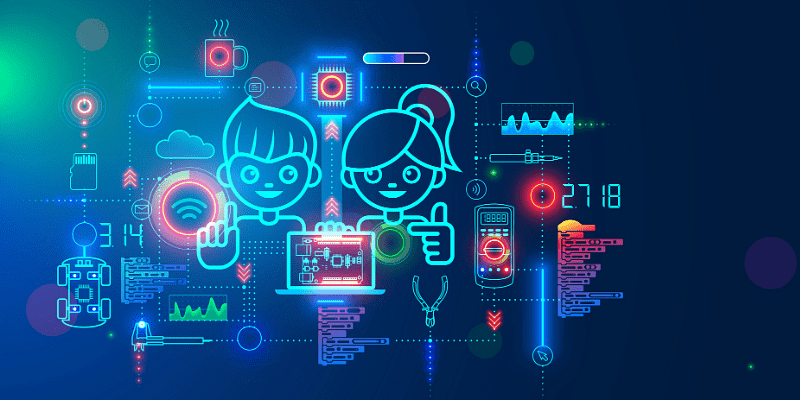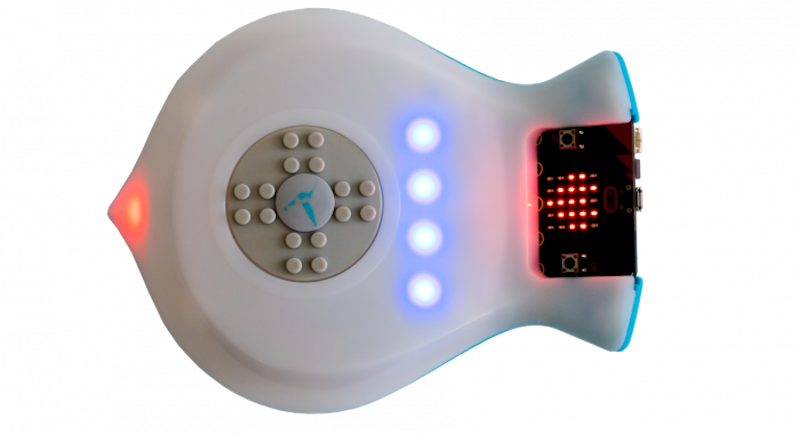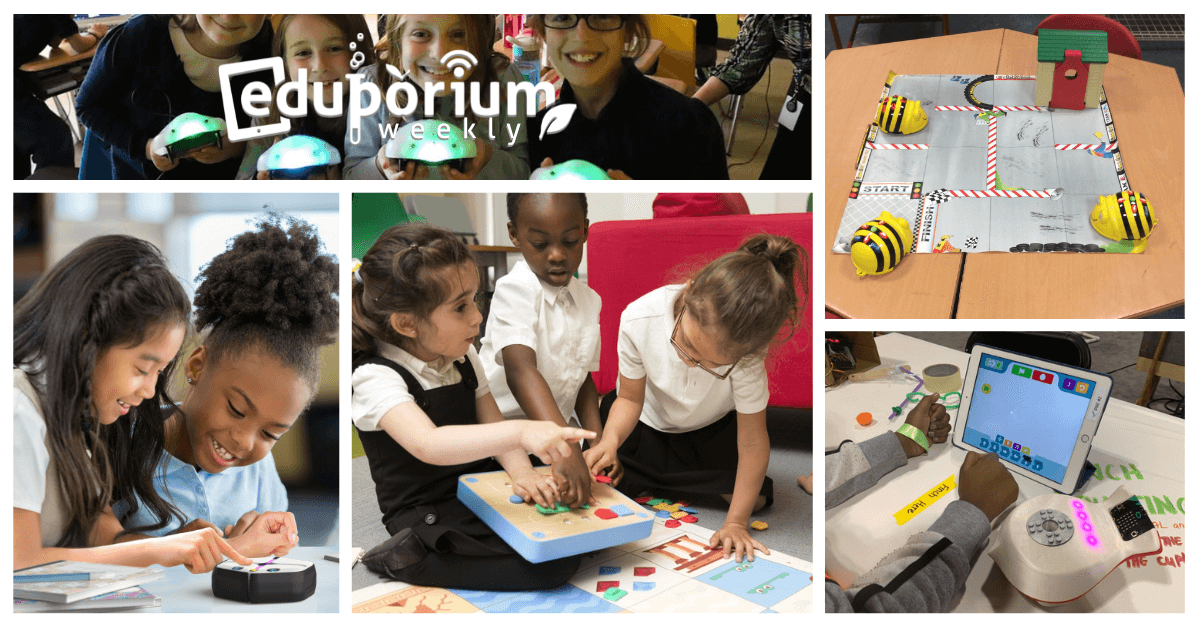Computer science, once a complex endeavor reserved for the smartest of the smart, is no longer such an intimidating area. Coding has gradually become a common aspect in our lives—helping make it less scary for many. And, though it has so many applications in our modern world, learning how to code has perhaps never been more accessible. Thanks largely to educational robotics tools, adults, younger professionals, teenagers, and even kids are learning new coding skills every day. And, this connection to robotics helps ensure that the next generation of programmers and problem solvers are ready for anything.
Computer Science is For Anyone
Technology has certainly evolved rapidly, especially in the last decade or so. Now, it's easy for a student to pick up a robot, pair it with a tablet, and start to code. As we know, it was not always that simple, however. The simplicity that now comes with learning computer science skills through programming robots certainly has leveled the playing field for younger children. Also, one doesn't necessarily need to go on to become a computer scientist after learning coding skills. These skills, including analytical thinking, problem solving, and collaboration, will serve students well in any number of areas. Even without the coding background or robotics experiences, it's feasible students could begin realizing how they can achieve future success.
Ideas for getting started.
As for actually getting started with building coding skills, many classroom robotics tools also incorporate hands-on, problem-based discovery. Once these students get a bit of experience, it could start to become second nature but, at first, seeing how they can use code to affect outcomes helps make programming feel more real to them. Typically, when first starting out, students use block-based coding or will perhaps even program a robot without a screen. This helps them begin to learn some of the various movements different types of robots can do. Plus, the hands-on nature of these tools enables students to think critically, plan a few steps ahead, and more.
Coding and robotics online or offline.
This type of up-close experience helps kids learn about the intuitiveness of robotic systems and how they can affect potentially complex behaviors. There's also options for coding offline depending on the learning environment from school to school. In these types of situations, students still have the same opportunity to collaborate among their peers, write programs, and troubleshoot when necessary. Sometimes, they'll have a virtual robot on their screen and, other times, they may simply be writing and testing code. In any case, this, too, is a great option for introducing robotics and coding and helping students build a foundation.
Connecting Demand and Accessibility
While it's true that coding skills are very much in demand, it also takes time for someone to gain fluency in what essentially amounts to a totally new language. So, that's why the availability of beginner-level robotics and CS tools is so vital and equally valuable for children across all grade levels. As many computer science experiences become even more accessible, awareness and willingness to teach it are also increasing. Like we said, coding might not be required in all 21st century careers but that ability to think like a programmer and problem solve like a true professional will be. And, whether it's with physical or digital tools, students can easily find ways to code, which is a great start.
Helping students get started with robotics opportunities.
For students who are new to coding, finding a way to make it relatable to them is often effective. Students might, understandably, be nervous about learning something they associate with being incredibly powerful. With all these different options, however, it's much easier to then deliver the right messages and create the right experiences. If we're being honest, it's sometimes up to the educators to generate some buzz around coding. We also know, however, this can be challenging if they're not seasoned coders themselves. That is why accessibility is so important when it comes to coding tools and platforms. With this added simplicity, it's often easier to keep students interested once they see how they can truly take control.
Inspiring students to build a foundation.
Since coding is permeating many industries—not just computer science—the opportunities for students to make an impact are increasing. So many systems still require computer code in order to operate efficiently, stretching various coding opportunities throughout industries like agriculture, medicine, robotics, and even education. Helping students find new passions by creating coding opportunities for them could also better enable them to potentially discover new career fields of interest. And, thanks to a wide range of accessible coding tools for students, this is much easier. That accessibility also helps educators create continuity as well, ideally resulting in students exploring coding every year, which helps them recognize and remember its importance—including potentially to their own futures.

Why It's Good to Learn Coding
As we've said, coding has steadily evolved from something used only in traditionally technical careers to a requirement in many industries. As the importance of coding continues to surge, so too has the number of related (and often unfilled) jobs. Coding helps all types of professionals create the best possible product or outcome for those they serve, whether that's for a website, a program, a platform, an app, or a high-stakes operation. In terms of starting out with coding, it is often important to first choose the right language. Most people, including students, would need to start with something on the basic side, like Scratch. If they have a background in computer science, however, they might be able to jump right into text-based coding.
Coding basics and having fun with robotics tools.
Coding certainly has its complexities but, for those who are willing to learn its nuances and value, it can open up tons of professional and difference-making opportunities. And, as with developing any new skill, learning to code is easier when focusing on the basics at first. Many students will be able to pick up on coding and robotics principles rather easily. Perhaps more than in any other area, basic coding skills and understanding how everything connects is very important. Plus, in terms of attracting students, coding is also really fun. Even though they're learning valuable skills, the ways they learn them often involve games, puzzles, or collaborative experiments. Plus, it serves as a stress-free start to learning a new language.
Building skills for all future scenarios.
Also, learning coding skills is not exactly something that will soon become obsolete. Even at first, students tend to use what they've learned to make connections that serve them well as they develop. Plus, although they're likely not thinking about these facts in elementary school, programming skills also often translate to job security. Further, as new types of computer science jobs undoubtedly start popping up, having the key skills and background in coding would potentially allow these professionals to more easily transition. And, as we all know, learning to code isn't only about building programming skills. However old they are, those students (or adults) who are new to programming learn so much more as well.
When Teaching Coding, Why Use Robotics Tools?
There are many different ways that students (and adults) can learn to code. It just so happens that robotics tools offer the type of introduction most educators would want for their students. They are fairly simple but intuitive enough for students to use without too much hand-holding. Options other than robotics, however, include using online platforms, mobile apps, and various computer-based games. One logical reason the robotics route is effective is because it illustrates how machines can read written instructions and execute commands. When kids are coding, they are essentially compiling a list of consecutive elements that make up a larger overall program. And, in order for them to see this unfold tangibly, robots are a great option.
The learning process for students.
When coding with robots, students are exposed to the same steps any programmer would need to take. This begins with determining what they want for the eventual outcome of their program, what they believe this program will help them accomplish, and the most efficient way to get there among some other things. As they build programs from the ground up, they are always thinking about the next steps, commands, or blocks. And, thinking in this authentic way helps kids learn the importance of trial and error, recalculating, and computational thinking. Plus, since robotics tools are obviously very hands-on, they help enable kids to think creatively and connect their problem solving to the same types of processes as professionals.
Real-world skills development.
As is typical, it's super important to ensure that all students are developing basic skills, competencies, and readiness. While some robotics tools might look fun and cool, there are those that are much more tried and true. On top of building their computer science foundation, analytical thinking background, and that eye for detail, learning with robotics tools helps kids build soft skills, too. A lot of learning to code actually involves learning to debug initial attempts at creating programs. In doing this, kids naturally begin to understand the value of persevering through initial failure, taking pride in their effort, and seeing the power of collaborating. After all, as we know, these are such important skills in the real world.

Tips for Starting Out with Robotics Instruction
Typically, when we say someone is teaching robotics in the classroom, it's actually more accurate to say that they're teaching with robotics tools. In most instructional situations, educators are using robotics tools to just teach coding while actually teaching students about the complexities of robots and robot systems is usually reserved for when they're older. Lots of those same principles apply, however, when educators help students develop with purposeful robotics and coding experiences. As for some tips for those who are new to this area, the first is to trust your judgement. Educators can do their own research on classroom robotics solutions and discover what they think will work best with students—not what others claim will be the best.
Finding the right tools and resources.
It's also important to be okay with starting out from scratch. Especially if you're creating a coding class or starting a school robotics club, incorporating some of the simpler robotics tools is usually your best bet. Also, remember that the online coding tools can potentially be just as effective as the hands-on ones. This means that you wouldn't have to spend as much money on resources, which could sometimes be a factor. You should also remember that, while some online coding tools do include digital, on-screen robots, not all do. And, some of those may have costs associated with certain features. Just be sure to do some research and plan for the types of lessons and outcomes you will build around. Have some faith that you'll find your groove, too, even if it's not overnight.
Determine what works for you.
In terms of finding ideas and support, a tried and true strategy is to leverage insights from those who have done it before. Whether from teachers in the same school or district or strangers from social media, plenty of them will be eager to share their thoughts, tips, and struggles. It starts with reaching out and keeping an open mind to suggestions. Just like with students, teachers will probably also make mistakes when they're starting out with a new STEAM or robotics tool. As such, modeling how to accept mistakes, analyze them, and learn from them is a key part of coding education. From there, if you find an instructional approach or product line that works, stick to it and continue trying to adapt it.
For the latest EdTech, STEM, and 21st century education news, follow us on Twitter and Instagram. Like us on Facebook, too, or sign up for our newsletter for our latest product announcements and offerings. If you have an idea for an Eduporium Weekly theme, send us a message on social media or comment below.




1 Comment